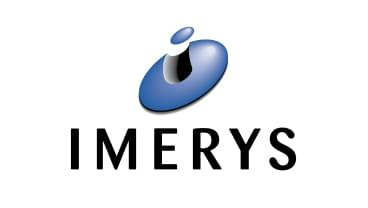
Imerys
Imerys is a multinational company that mines and processes specialty minerals. Imerys filed for bankruptcy in February 2019, seeking protection from lawsuits alleging asbestos in its talc caused cancer. A trust was created with $862 million in January 2024 to handle future asbestos claims.

Imerys and Asbestos in Luzenac Group Talc
Imerys is a leading talc producer, supplying about 15% of the world’s talc. It operates mines and processing facilities in Europe, North America, Asia and Australia. Its open-cast mine in Three Forks, Montana, is the largest talc operation in the United States.
The company did not play a major role in the asbestos industry during the 20th century. Rather, Imerys’ liability for asbestos exposure came with its acquisition of the Luzenac Group, a major talc supplier.
Imerys Talc America is liable for diseases caused by asbestos-contaminated talc mined by the Luzenac Group during the 20th century. Imerys disputes its talc has ever caused cancer, but recent lawsuits involving the company have been successful for plaintiffs.
The Luzenac Group was named after the French village where it was founded in the 1840s. The nearby mine at Trimouns has since become one of the world’s largest talc-mining operations.
In 1988, the company was bought by the mining group Rio Tinto. It was then sold to Imerys in 2011, and the division was known as Imerys Talc. Today the division is known as Imerys Performance Additives.
Imerys operates hundreds of industrial sites across 50 countries around the world.
Imerys Files for Bankruptcy
Imerys Talc America and two of its subsidiaries, Imerys Talc Vermont and Imerys Canada Inc., filed for Chapter 11 bankruptcy protection on Feb. 13, 2019. The company sought protection from lawsuits alleging asbestos in its talc caused cancer.
At the time of the filing, Imerys Talc America was facing more than 14,000 claims in courts across the U.S. regarding asbestos-contaminated talc. Imerys Talc America President Giorgio La Motta said his companies would continue to operate as usual through the bankruptcy process.
“After carefully evaluating all possible options, we determined pursuing Chapter 11 protection is the best course of action to address our historic talc-related liabilities and position the companies for continued growth,” La Motta said in a statement.
In a step towards funding a future trust fund, Imerys sold its American and Canadian operations to Magris Resources Canada Inc. for $223 million in 2020. In October 2021, the bankruptcy judge overseeing Imerys’ case threw out more than 15,000 talc claimants’ votes after Johnson & Johnson made a request to block changes to thousands of votes on the plan.
Imerys Talc America, Inc. and the company’s former owner, Cyprus Mines Corporation, created a collective trust of $862 million in January 2024. The money will settle personal injury claims that its talc causes cancer. A hearing to approve the company’s disclosure statements is scheduled for April 29, 2024.
Asbestos Litigation Involving Imerys
Many of the lawsuits include consumer goods giant Johnson & Johnson, which uses Imerys talc in its iconic Johnson’s Baby Powder and Shower to Shower products.
Imerys’ bankruptcy filing prompted Johnson & Johnson to remand 2,400 cases to federal courts across the U.S. in April 2019. A month later, plaintiffs began fighting the case removals, arguing the removals were improper and lacked jurisdiction.
Most of the lawsuits involve women who allege the talc caused their ovarian cancer. Only a small percentage of lawsuits involve mesothelioma cases linked to contaminated talc.
Mesothelioma Lawsuits Against Imerys
- In 2018, a jury in New Jersey awarded a total of $117 million to Stephen Lanzo III and his wife. Lanzo developed mesothelioma after using Johnson & Johnson’s Shower to Shower and Baby Powder products for more than 30 years. As the supplier of the talc used, Imerys was ordered to pay $36 million of the damages.
- Later that year, Imerys settled a lawsuit filed by 22 women with ovarian cancer, another disease linked to asbestos exposure. The women blamed their diagnosis on baby powder sold by Johnson & Johnson and made from talc supplied by Imerys. The settlement reportedly included a payment of at least $5 million.
- In 2017, a California jury awarded $22 million to the family of Richard Booker. He died of mesothelioma the year before. Booker claimed he developed the cancer because of exposure to asbestos-contaminated talc used at the paint factories where he worked. Imerys shared part of the responsibility for supplying the talc.
Talc and Asbestos
Talc is the softest naturally occurring mineral, and it has a variety of uses. Manufacturers use it in paper, paints, plastics, ceramics and many types of building materials. Talc is also an ingredient in some fertilizers and pesticides.
Perfumed talcum powder is a common personal hygiene product, and talc is added to many cosmetics. Purified talc is used in pharmaceuticals and certain medical procedures.
However, in recent years it has come to light that talcum powder is often contaminated with asbestos.
Talc and asbestos often occur in the same geological formations together. Before the dangers of asbestos were publicly revealed, many companies neglected to check for asbestos in talcum powder products.
Asbestos-contaminated talc dust also puts miners and factory workers at risk of developing asbestos-related diseases. Other occupations at risk of exposure to contaminated talc include painters, ceramic workers, construction workers and agricultural workers.
Recommended Reading


